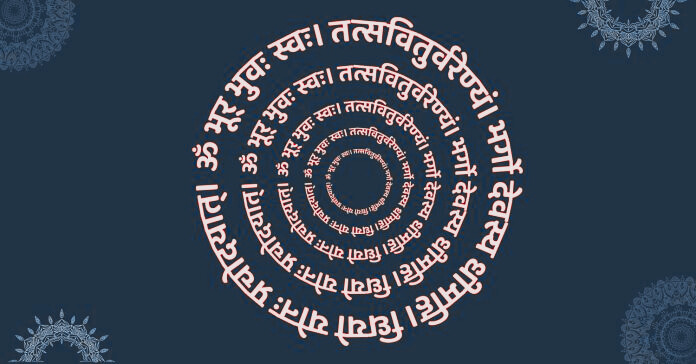A mantra is a sacred sound, word, or phrase repeated during meditation or spiritual practice. The word ‘mantra’ derives from the Sanskrit terms ‘man,’ meaning mind, and ‘tra,’ meaning vehicle or instrument, signifying that a mantra is an instrument of the mind. It is a powerful sound vibration or chant used to enhance a deeper state of meditativeness.
The Essence of Mantras
Mantras often have no literal meaning, as they are meant to transcend the mind’s preoccupation with meaning and thought. For instance, according to yoga lineages, each individual is given a personalized bija (seed) mantra based on the sound vibration according to their needs or sometimes depending on their birth chart. This mantra is silently repeated during sadhana (spiritual practices) to help the practitioner in their yogic pursuits.
In yoga, various mantras are used to set an intention and keep the mind focused during practice. These mantras, considered sacred formulas encapsulating spiritual truths, have the power to transform a seeker. When repeated with conviction, they can have a profound and transformative effect, leading to a deeper spiritual awareness and connection. This is why pregnant women would listen to certain sounds and chants in ancient times, hoping to cultivate the best potential in the womb.
Mantras are combinations of sounds that, when chanted correctly, can open up doorways into creation itself. Thus, mantras are powerful sound vibrations that create a specific atmosphere within and around a person rather than being significant for their literal meaning. A mantra’s significance lies in the sound or reverberation it creates, not in its meaning, as meaning exists only in the psychological space of the human mind, while sound is an existential reality.
The science of mantras involves using sound to create a specific vibrational atmosphere. There are pure mantras without any meaning and mantras with meanings provided to help people involve themselves with them. However, attaching meanings can limit the experience. Powerful mantras like the Gayatri Mantra should be chanted with utmost care, proper instruction, and guidance. The improper usage of such powerful sound combinations can cause serious problems. This caution highlights the importance of proper training and initiation when using powerful mantras, instilling a sense of caution and respect for their power.
Foundations of Creation
According to Yoga, Darshana, specifically discourses on Nada Yoga, sound is not just a part of creation but the very foundation of it. The first thing that happened in creation was sound; everything is sound, which is the primordial form of creation before light or any other manifestation. Sound is not the basis of energy but the first expression of the formless, all-pervading energy or consciousness.
According to Yoga philosophy, everything, including what we consider as inanimate objects, such as a rock, is essentially vibrating energy or sound at the fundamental level. The creation process arises from sound vibrations, which slowly transform into light and then into physical forms. Sound is seen as an existential reality, whereas meaning is merely a psychological construct created by the human mind. The science of mantras involves using specific sound combinations to create certain atmospheres or vibrations within and around a person. Carefully crafted sounds put together can create tangible waves of energy that impact spaces and beings.
In essence, Nada, or sound, is not just a part of creation but its very foundation. All existence arises from primordial sound vibrations, which then manifest as light and form. Understanding and harnessing these primordial creative forces through specific sounds like mantras can foster a sense of enlightenment and connection with the fundamental basis of creation.
Mantras and Spiritual Evolution
Some common and bija mantras are: AUM, the primordial sound of creation in Hinduism, resonates with divine Reality when chanted. Gayatri Mantra is to venerate the Sun deity, promoting wisdom and dispelling darkness, while the Shanti Mantra invokes peace for all beings. Additionally, potent bija mantras like Hreem embody the essence of creation and energize the heart chakra, while Shreem invokes blessings of abundance and radiance, aligning with lunar energy. Krim, associated with Goddess Kali, propels transformation and evolution, while other bija mantras, such as Aim and Klim, symbolize divine energies like Shakti and love. With reverence and intention, these mantras manifest desired atmospheres, connect with divine forces, and facilitate spiritual growth and alignment.
In summary, mantras are potent tools for meditation, transcending thought, and fostering spiritual connection—insights from Yoga Darshana the importance of understanding their vibrational impact and exercising caution in their usage. Philosophically, sound’s role in creation, as outlined in Nada Yoga, emphasizes its foundational significance. Individuals tap into primordial energies through bija mantras like Hreem, Shreem, and Kreem, facilitating spiritual evolution. Thus, mantras remain timeless conduits for seekers on the path to moksha, offering profound inner clarity and transformative experiences.
